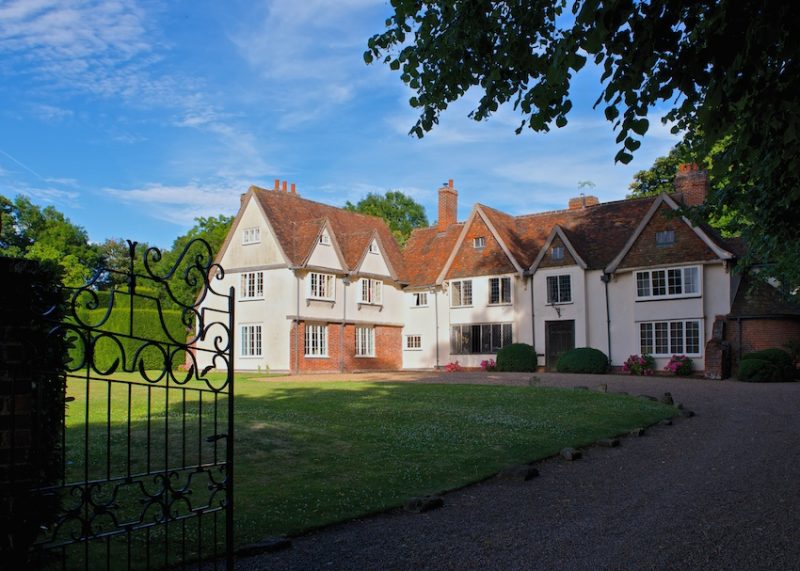
Provender House lies just west of Faversham
Three days before her mother died and as the century breathed its last, Olga Romanoff looked out of the window from the long oak gallery in Provender House and saw its bathroom wing subside and gently collapse. Her mother, the glamorous Nadine MacDougall who married a Russian prince, is still a legend in these parts, but when she died, Provender House was largely derelict.
On her mother’s death Olga, who had spent all her childhood at Provender, became its owner. To start with armed with nothing but dogged determination, later supported by English Heritage, Swale Borough Council and the conservation architect, Ptolemy Dean, Olga set about the painstaking task of its restoration. A guided tour of the house (see details on provenderhouse.co.uk), which lies down a country lane west of Faversham, takes the visitor on an enthralling journey through the history of English architecture and life since it was first owned by Sir John de Provender in the 13th century. The visitor can marvel at the magnificent vaulted solar with carved crown posts which, with the dining room, is the early core of Provender and now beautifully restored as ‘The Crown Post Room’. He can admire the restoration of the elegant late 17th century wing where portraits of Olga’s Finnish and Russian ancestors hang.
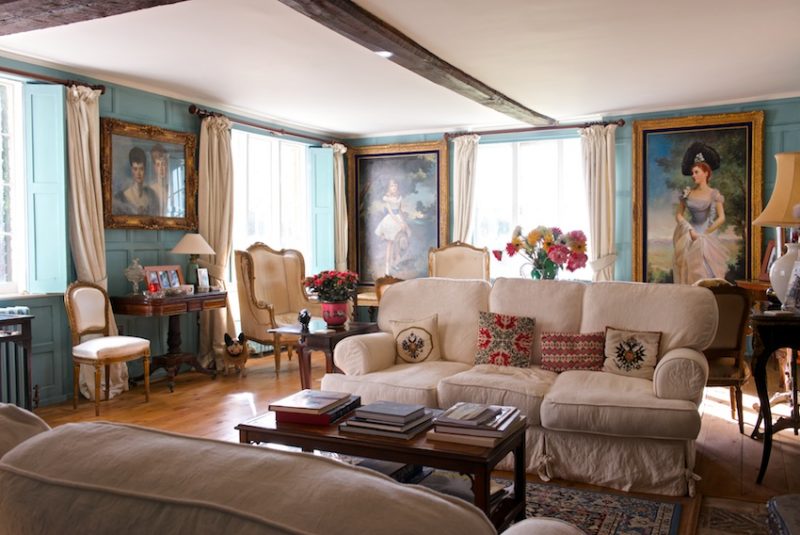
The elegantly restored late 17th century sitting room hung with portraits of Olga’s Finnish and Russian ancestors
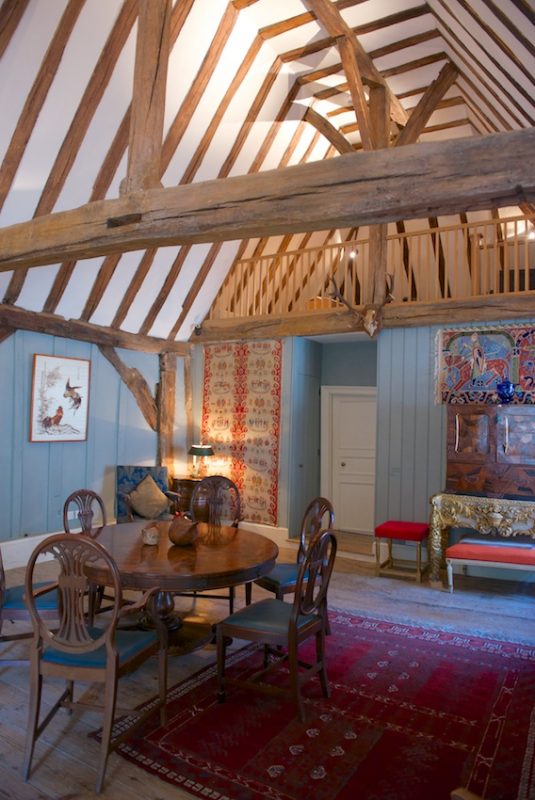
The Crown Post Room, painstakingly restored, and the ancient heart of Provender
Provender is remarkable because it has grown with its inhabitants over the centuries; they added bits on and refashioned it for their own use, but left much of its architecture intact. No-one bothered to stick on a fashionable 18th century frontage, no-one thought to knock it down and start again. Its appeal is that it has the feeling of a house loved by its inhabitants on a personal more than a grand scale. The conservationists have recognised Provender’s historical and architectural importance and gasp and stretch their eyes in retrospective horror at some of Olga’s mother’s eccentric decorating schemes which included using gold Airfix paint to jolly up a Jacobean fireplace, and at her grandmother’s desire to keep up with mock Tudor fashion when she exposed and painted the exterior beams. The deleterious effects of this have been rectified and the frontage of Provender is beautifully restored.
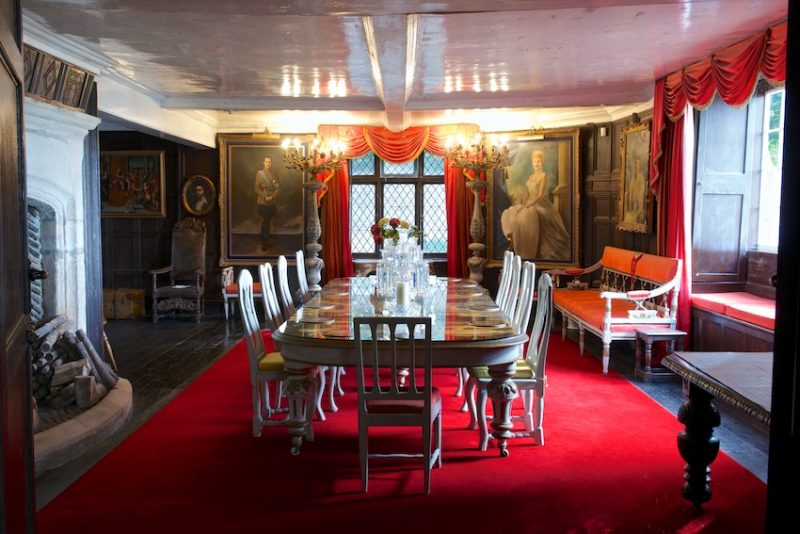
The oak dining room with the vast mirrored table, with portraits of Olga’s parents Prince and Princess Andrew Romanoff.
An extraordinary succession of people have passed through Provender over the centuries. After Sir John de Provender came local landowners, the de Viennes, who built the wing with the Crown Post Room in the 14th century. However, the rumour that Provender was once the hunting lodge of the Black Prince has been junked, says Olga. In 1633, the house was sold to James Huguesson who was described as a ‘merchant adventurer’ and remained in his family for 300 years. In the 18th century, Joseph Banks, the noted naturalist and drainer of the Lincolnshire fens, married Dorothy Huguesson and planted Canadian hickories at Provender, and the original Banksian rose, which climbed through the trees, dotting them with creamy blooms. The rose is gone but the towering hickories remain.

Joseph Banks, the notable 18th century naturalist who lived at Provender, planted Canadian hickories and the original Banksian rose at Provender
Provender welcomed Fanny Knight, Jane Austen’s favourite niece, on her marriage to Edward Knatchbull-Huguesson, 9th Baronet and first Lord Brabourne, who inherited Provender when his aunt died childless. There is no record of Jane Austen visiting but it is surely extremely likely. Jane Austen’s letters and the original copy of Lady Susan were found in a box at Provender. Olga muses resignedly that if the box could have lain undiscovered for another hundred years, its value would have helped considerably with the next stage of renovation, the restoration of the 17th century brewhouse wing.
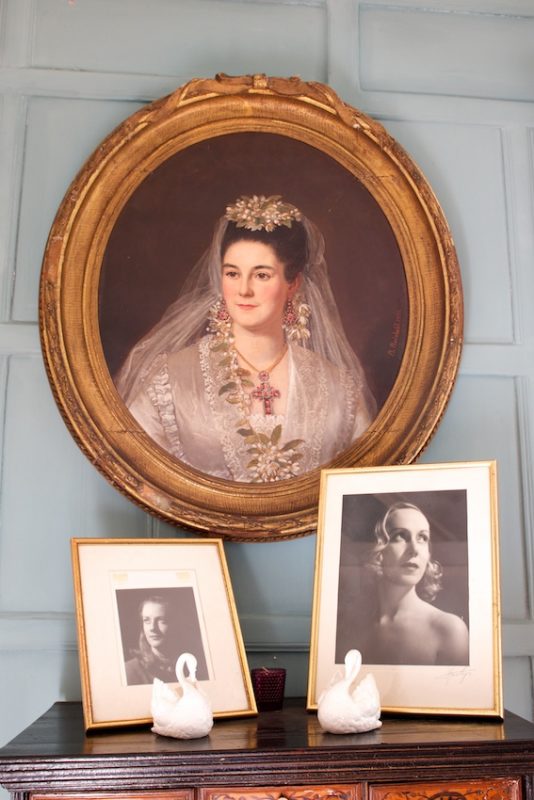
The oil portrait is of Constance Bergström, Olga’s maternal great-grandmother, who introduced the family to Provender
Olga’s family came to Provender House in 1890 when her maternal great-grandmother, Constance Borgström, came to Kent from Finland and rented it from the Knatchbull-Huguessons. In 1912, the house was put up for auction when it was bought by Sylvia MacDougall, born Borgström in Helsinki, daughter of Constance and Olga’s grandmother. Provender was requisitioned during the war for military use until 1949 when Nadine, Sylvia’s daughter, moved to this ancient sprawling house among the Kent cherry orchards, bringing her husband, Prince Andrei Alexandrovich Romanoff, Olga’s father and nephew of the murdered Tsar Nicholas II of Russia.
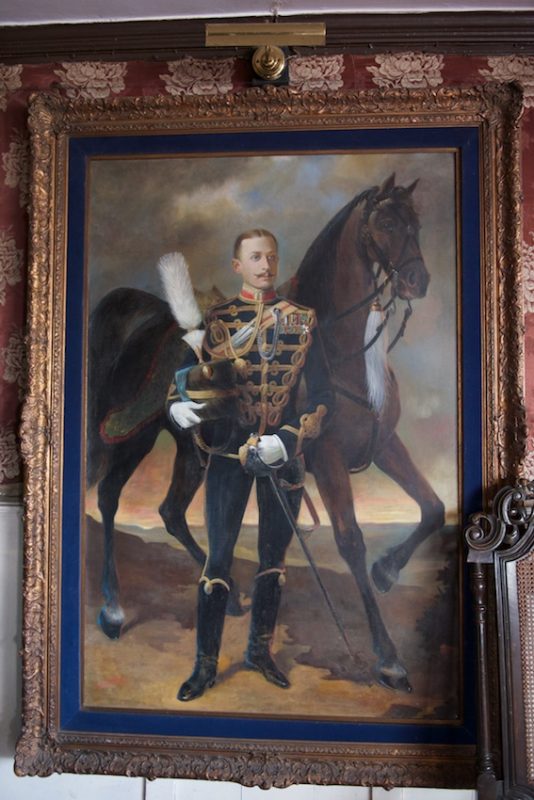
Herbert McDougall, Olga’s maternal grandfather
Prince Andrew as he is known here, the tragic royal exile who survived the Russian Revolution, while the cousins with whom he had played as a child rollerskating down the corridors of the Winter Palace, had perished in the Ekaterinburg cellar, found in Provender’s ancient corners and idiosyncratic architecture the peace which had eluded him in his turbulent life. When they moved in, the house was a shambles after nearly a decade of military occupancy and, like Olga after them, they set about its restoration.
Olga remembers her father being terribly practical: ‘He enjoyed his involvement in the restoration of Provender. He loved working with wood and carved with feeling and skill.’
Once the dashing lieutenant in the Chevalier Gardes, the head of the Russian Orthodox church in exile, and a Russian prince, Olga’s father was certainly a glamorous figure, yet Olga says: ‘At Provender he could have been mistaken for the gardener. He wore an ancient felt hat with a brim, a tweed jacket noticeably worn through and grey flannel trousers that my elegant mother itched to throw away. Being stone-deaf, he hated cocktail parties, formality and socialising generally, though my mother adored it. He stood at six foot two but a duodenal ulcer had made him stick thin and he stooped.’

Provender provides a record of seven centuries of English architecture
The romantic Romanoff connection to rural English Provender continues to enthrall. Olga tells Faversham Life that she recently gave a guided tour to a large Russian group which included two priests. They had known, or knew of, Prince Andrew, and brought with them gifts – ‘Squirrel Nutkin type gifts,’ says Olga, ‘a few sweets, a silk scarf, postcards of Peterhof’. Cake and tea was offered to the group and the priests sang a Russian grace.
As Provender’s restoration progresses, it is generating revenue for future restoration. Provender is available as a venue for weddings and events, and Olga is publishing a book of memoirs in the autumn.
Provender House is a fascinating record of human life over the past seven centuries and is remarkable for inspiring affection in its incumbents. Its survival now owes much to Olga’s determination. She remembers as a child complaining of the boredom of having no-one to play with and her mother’s cry of: ‘How can you be bored when you have lovely, lovely Provender?’
Text: Posy. Photographs: Lisa